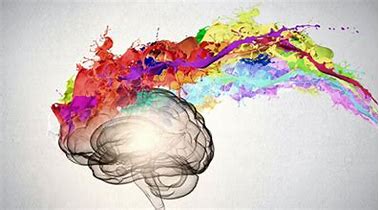Unlocking the Subconscious: Hidden Influences on Daily Decision-Making is a blog post that explores the fascinating realm of the subconscious mind and its subtle yet powerful impact on the decisions we make in our everyday lives. Here’s an explanation of the key points covered in this post:
- The Subconscious Mind Defined: The article begins by defining the subconscious mind, explaining its role as the reservoir of thoughts, memories, and influences that operate below the level of conscious awareness.
- Invisible Forces at Play: It explores the idea that many decisions are shaped by subconscious influences, such as past experiences, cultural conditioning, and implicit biases. The blog aims to unveil these hidden forces that subtly guide our choices.
- Cognitive Biases: The post delves into common cognitive biases and how they can impact decision-making. It discusses biases like confirmation bias, anchoring, and availability heuristic, shedding light on how they shape our perceptions and choices.
- Emotional Influences: The role of emotions in the subconscious mind is highlighted. The article discusses how emotions can act as powerful influencers, steering decisions without conscious recognition.
- Social Conditioning: It explores how societal norms and expectations become ingrained in the subconscious, influencing decisions related to relationships, career choices, and lifestyle.
- Habits and Routines: The blog discusses how habits and routines, often governed by the subconscious, contribute to decision-making. It offers insights into breaking free from automatic behaviors to make more intentional choices.
- Mindfulness and Awareness: Practical tips for cultivating mindfulness and awareness are provided. The post encourages readers to become more conscious of their thoughts and choices, enabling them to break free from subconscious influences.
- Analyzing Personal Beliefs: It guides readers in reflecting on their beliefs and values, encouraging a deeper understanding of how these factors, often rooted in the subconscious, shape decision-making.
- Navigating Unconscious Bias: The blog offers strategies for recognizing and addressing unconscious biases to make more informed and equitable decisions, both personally and in broader societal contexts.
- Empowering Conscious Decision-Making: The post concludes by empowering readers with the knowledge to make more conscious and intentional decisions. It emphasizes the potential for personal growth and positive change when individuals become aware of and unlock the hidden influences of the subconscious mind.
In essence, “Unlocking the Subconscious” serves as a thought-provoking exploration of the unseen forces that impact our daily decision-making processes. The blog aims to raise awareness about the subconscious mind’s role in shaping choices, empowering readers to make more intentional and informed decisions in various aspects of their lives.
From Stress to Serenity: Strategies for Mastering Mental Well-being is a blog post that provides insights and actionable strategies for individuals seeking to manage stress and cultivate a state of mental serenity. Here’s an explanation of the key points covered in this post:
- Understanding Stress: The article begins by exploring the nature of stress, acknowledging its prevalence in modern life and its impact on mental well-being.
- Identifying Stressors: It encourages readers to identify specific stressors in their lives, whether related to work, relationships, or other factors, as a crucial first step in managing stress.
- Mindfulness and Present-Moment Awareness: The blog post introduces mindfulness as a powerful tool for managing stress. It explains how being fully present in the moment can help individuals break the cycle of worry and anxiety.
- Breathing Techniques: Practical breathing exercises are offered as a means of promoting relaxation and reducing stress. The post guides readers through simple yet effective techniques to regulate their breath and calm the nervous system.
- Cognitive Restructuring: It discusses the concept of cognitive restructuring, helping readers recognize and challenge negative thought patterns that contribute to stress. Strategies for cultivating a more positive mindset are explored.
- Time Management: The article emphasizes the importance of effective time management in reducing stress. It provides practical tips for prioritizing tasks, setting realistic goals, and creating a balanced daily schedule.
- Physical Activity for Mental Health: The connection between physical activity and mental well-being is highlighted. The post discusses the positive impact of exercise on stress reduction and overall mental health.
- Social Support and Connection: The importance of social connections in alleviating stress is explored. The blog encourages readers to seek support from friends, family, or a professional network.
- Healthy Lifestyle Choices: It discusses the role of nutrition, sleep, and other lifestyle factors in mental well-being. Practical advice on maintaining a healthy lifestyle to support mental health is provided.
- Mindful Relaxation Techniques: The post concludes by offering additional mindful relaxation techniques, such as guided imagery, meditation, or progressive muscle relaxation, to further promote a sense of serenity and calm.
In essence, “From Stress to Serenity” serves as a comprehensive guide for readers looking to navigate the challenges of stress and enhance their mental well-being. The blog provides a range of practical strategies rooted in mindfulness, cognitive-behavioral principles, and lifestyle choices to empower individuals on their journey toward serenity and improved mental health.

Interpersonal Dynamics: Enhancing Relationships Through Psychological Insights is a blog post that explores the intricacies of human connections, offering psychological insights and actionable tips to improve relationships. Here’s an explanation of the key points covered in this post:
- Introduction to Interpersonal Dynamics: The article begins by introducing the concept of interpersonal dynamics, highlighting the complex interplay of thoughts, emotions, and behaviors that shape our interactions with others.
- The Role of Communication: It emphasizes the pivotal role of effective communication in relationships. The post explores communication styles, active listening, and the impact of non-verbal cues on interpersonal dynamics.
- Understanding Emotions: The blog delves into the importance of emotional intelligence in relationships, encouraging readers to recognize and navigate their own emotions as well as those of others for more empathetic and harmonious connections.
- Attachment Styles: It discusses psychological attachment styles and their influence on relationships. Readers are introduced to concepts like secure, anxious, and avoidant attachment, providing insights into how these styles can impact interpersonal dynamics.
- Conflict Resolution Strategies: Practical strategies for resolving conflicts are presented, drawing from psychological principles. The post guides readers through constructive communication during disagreements and offers tools to navigate conflicts in a healthy manner.
- Building Trust: The article explores the psychology of trust in relationships, discussing how trust is formed, maintained, and rebuilt. Trust-building exercises and tips are provided for fostering stronger connections.
- Setting Boundaries: The importance of setting healthy boundaries in relationships is highlighted. The blog offers guidance on assertiveness and effective boundary-setting as a means of maintaining balance and mutual respect.
- Social Influence and Persuasion: It touches upon social psychology concepts related to influence and persuasion in relationships. Readers gain insights into how subtle cues and behavioral patterns can shape opinions and decisions within interpersonal dynamics.
- Personality Compatibility: The post discusses the role of personality traits in relationships, exploring compatibility factors and offering advice on navigating differences to strengthen connections.
- Cultivating Empathy: It concludes by emphasizing the cultivation of empathy as a cornerstone of positive interpersonal dynamics. Practical exercises and mindset shifts are suggested to enhance empathy and understanding within relationships.
In essence, “Interpersonal Dynamics” serves as a valuable resource for readers looking to deepen their understanding of the psychological aspects that influence relationships. The blog provides insights into effective communication, emotional intelligence, conflict resolution, and various other psychological dimensions, empowering individuals to enhance the quality of their connections with others.
The Art of Positive Psychology: Crafting a Life of Meaning and Fulfillment is a blog post that explores the principles and practices of positive psychology, offering guidance on how individuals can intentionally shape their lives for greater happiness and fulfillment. Here’s an explanation of the key points covered in this post:
- Introduction to Positive Psychology: The article begins by introducing the field of positive psychology, emphasizing its focus on strengths, virtues, and factors that contribute to a fulfilling and meaningful life.
- The Pursuit of Happiness: It explores the concept of happiness and how positive psychology goes beyond fleeting moments of joy to encompass a more enduring sense of well-being and life satisfaction.
- Strengths and Virtues: The blog delves into the identification and cultivation of personal strengths and virtues. Readers are encouraged to recognize and leverage their unique qualities for personal growth and fulfillment.
- Gratitude Practices: Gratitude is highlighted as a key component of positive psychology. The post introduces practical gratitude exercises and discusses the transformative effects of cultivating a grateful mindset.
- Mindfulness and Positive Presence: It explores the role of mindfulness in positive psychology, emphasizing the importance of being fully present in the current moment as a way to enhance well-being and reduce stress.
- Positive Relationships: The article discusses the impact of positive relationships on overall life satisfaction. Readers are guided on nurturing meaningful connections and fostering a positive social environment.
- Engagement and Flow: It introduces the concept of “flow” – a state of deep engagement and immersion in activities that bring joy and fulfillment. Practical tips are provided for identifying and incorporating more flow experiences into daily life.
- Setting and Achieving Meaningful Goals: The blog explores the process of setting and achieving goals that align with personal values and contribute to a sense of purpose and accomplishment.
- Resilience and Coping Strategies: Positive psychology principles related to resilience are discussed. Readers learn about effective coping strategies and mindset shifts to navigate challenges with greater strength and optimism.
- Lifelong Learning and Growth: The post concludes by emphasizing the importance of continuous learning and personal growth for a fulfilling life. It encourages readers to embrace opportunities for learning and development.
In essence, “The Art of Positive Psychology” serves as a guide for readers to integrate positive psychology principles into their lives, fostering a holistic approach to well-being. The blog aims to inspire individuals to craft a life of meaning and fulfillment by incorporating practices that enhance strengths, promote positive relationships, and contribute to an overall sense of happiness and purpose.
FAQ:
1.what can i do with a psychology degree ?
A psychology degree opens up diverse career paths for graduates, offering opportunities to contribute to various aspects of human well-being. Some prevalent avenues include:
- Clinical Psychology: Clinical psychologists play a crucial role in assessing, diagnosing, and treating individuals grappling with psychological disorders. They can be found working in hospital settings, mental health clinics, or establishing private practices.
- Counseling Psychology: Focused on addressing everyday life challenges, counseling psychologists assist individuals dealing with stress, relationship issues, and career challenges. Their work spans across diverse settings such as schools, hospitals, and private practices.
- School Psychology: School psychologists collaborate with students, teachers, and parents to enhance academic, social, and emotional success. Their interventions and support are primarily implemented within educational settings.
- Industrial-Organizational Psychology: Applying psychological principles to the workplace, industrial-organizational psychologists strive to enhance productivity, employee satisfaction, and organizational effectiveness. They are employed in various settings, including corporations, government agencies, and consulting firms.
- Research Psychology: Research psychologists contribute to the understanding of human behavior and mental processes through conducting studies. Their work is primarily situated in universities, research institutions, and government agencies.
These represent merely a glimpse into the diverse career opportunities available to psychology graduates. To embark on a fulfilling career in psychology, it’s essential to explore these options, aligning them with personal interests and aspirations. Consideration of further education or specialized training can also pave the way for a more tailored and impactful career within the field of psychology.
2.what can you do with a bachelor’s degree in psychology ?





